Horseshoe
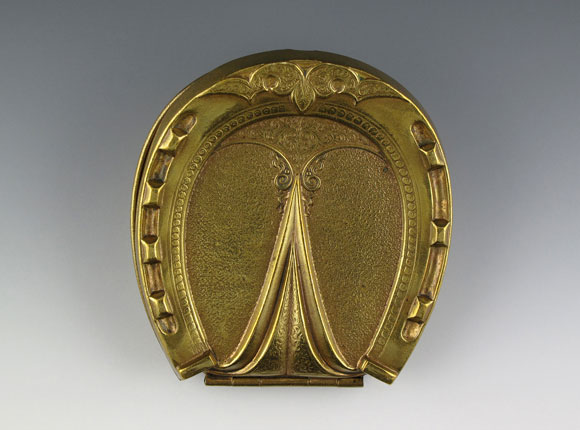
Needle Case
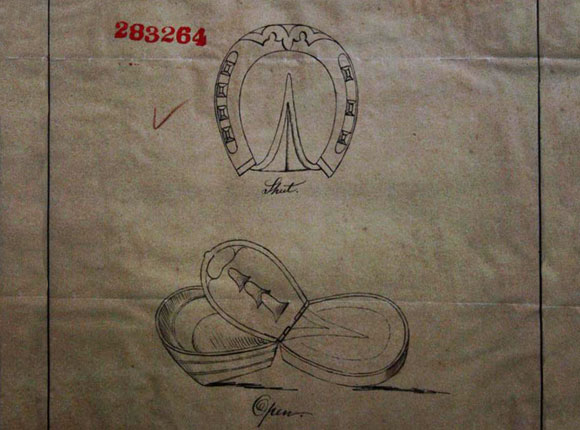
Design Representation
Design Details
Needle Case Type: |
Figural |
Patent/Registered to: |
Buncher & Haseler - Birmingham |
Patent/Design Representation #: |
Ornamental Class1: Metal: #283264 |
Patent/Design Registration Date: |
June 25, 1874
|
Location of Patent/Design Registration: |
The National Archives (TNA) - Kew, UK |
Reference #: |
TNA Representation - BT 43/36/283264
TNA Register - BT 44/3/283264 |
Dimensions: |
5.8 x 2.2 x 6.4 |
Material: |
Brass |
Name Variations: |
a) W. Avery & Son - Redditch
b) Baggalleys, Westall & Spence - London
c) Copestake, Moore, Crampton & Co - London
d) Cormack Bros - London (this needle case with this company name was sold online, however we do not have a photograph of it.)
e) Fisher - 188 Strand, London
f) W. Whiteley - Westbourne Grove |
Other Variations: |
Nickel-silver version |
Additional Photographs
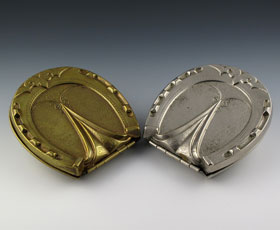
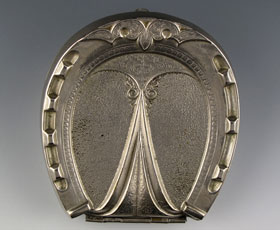
-
Brass and nickel-silver versions and nickel-silver top
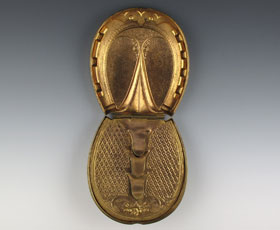
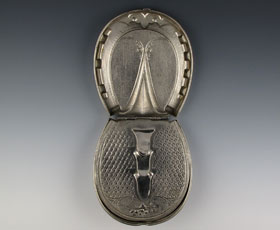
Brass and nickel-silver interiors
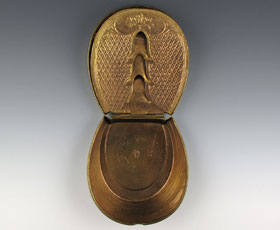
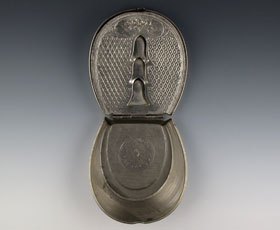
Brass and nickel-silver secondary interiors
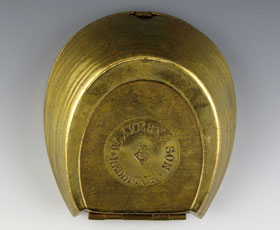
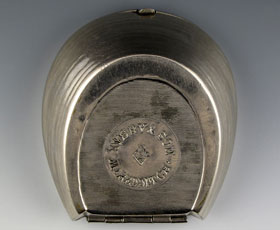
Brass and nickel-silver bottoms with Avery signature detail
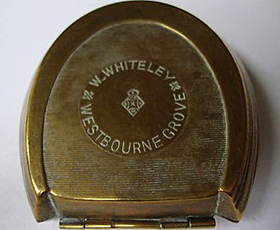
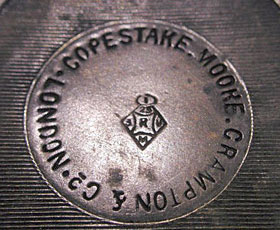
Bottom with Whiteley signature detail (photograph from the Internet) and Copestake signature detail (photograph courtesy of Colin Jackson)
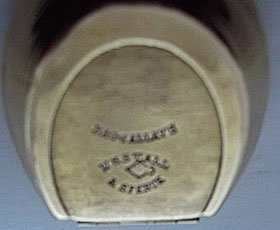
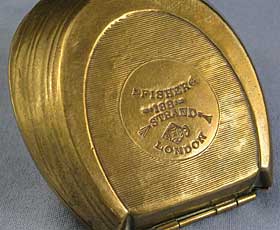
Left: Bottom with Baggallays signature detail (photograph courtesy of David Chatterley) and Right: bottom with Fisher signature detail (photograph from eBay)
Facts
Horseshoes made of steel or aluminium are nailed or sometimes glued to a horse’s hooves to protect them from wear and damage. The person
qualified to do this is called a farrier. Domestication of the horse removed them from their natural environment exposing them to different
surfaces and soil types thus making their hooves more susceptible to damage. This is exacerbated by changes from their activity patterns in
the wild, constant walking and grazing which naturally wore down the hoof, to their domesticated ones such as running at speed and hauling
loads. The horseshoe has long been regarded as a symbol or talisman of good luck.
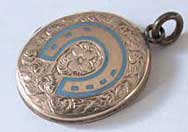
History
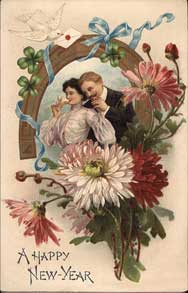
It is not known when metal horseshoes were first employed but they have remained largely unchanged in design for a thousand years. Bronze
shoes were common in Europe in 1000AD. By the 13th and 14th century iron was commonly used. Shaping of shoes after heating at a forge
was part of the blacksmiths work by the 16th century. There are several theories why the horseshoe has become to be regarded as lucky but with
the connection dating back to at least the time of the Crusades (12th century) there is no definitive explanation. These include among others,
that malign fairy folk were thought to be afraid of iron so could not cross a threshold protected by a horseshoe; the connection with blacksmiths
considered a lucky trade; the legend of St Dunstan who was a blacksmith and reputedly ensured the devil could not cross a doorstep if a horseshoe
was on display; and horseshoes having seven nail holes the number seven being ascribed properties that are magical, religious and lucky. Click
on either of the Victorian chromolithographic cards here to see a larger version of them.
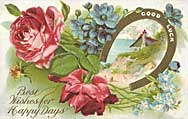
Miscellaneous
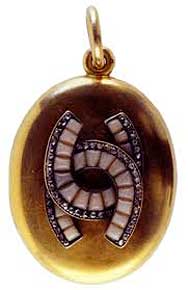
The lucky horseshoe was a commonly used motif by Victorians. It can be found on many greeting cards and is part of the symbolism so
characteristic of Victorian jewellery. On Prince Albert’s death in 1861, Queen Victoria entered a prolonged period of mourning and jet
jewellery became the fashion as people followed the lead in mourning duration and the adoption of black attire including jewellery. While
this was good for the jet industry, the best considered to be that from Whitby, jewellers suffered until an appeal was made to Prince Edward and his
wife Alexandra to breathe life back into their industry by leading a tend back to jewelled pieces. Prince Edward’s love of horseracing is
credited with popularising the horseshoe. Victorian jewellery returned to brighter themes when Queen Victoria relaxed her strict mourning in
1887 for her Golden Jubilee. Horseshoe pieces featuring nails or nail holes commonly use the lucky seven as does the Avery horseshoe.
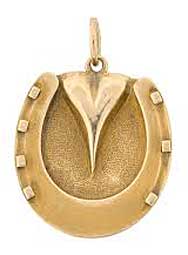
Note: Right side panel text and photos provided by Lynda Herrod.























